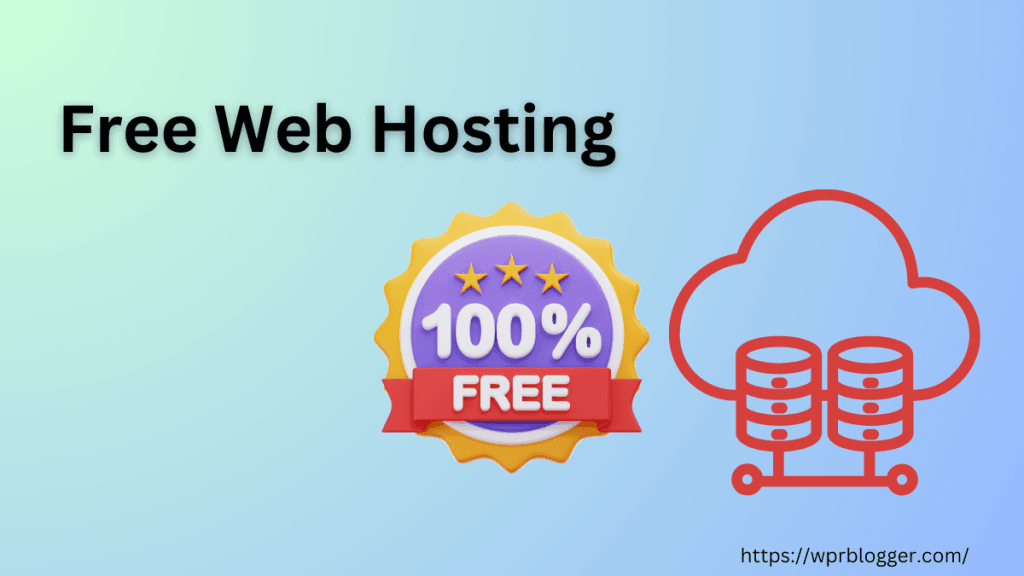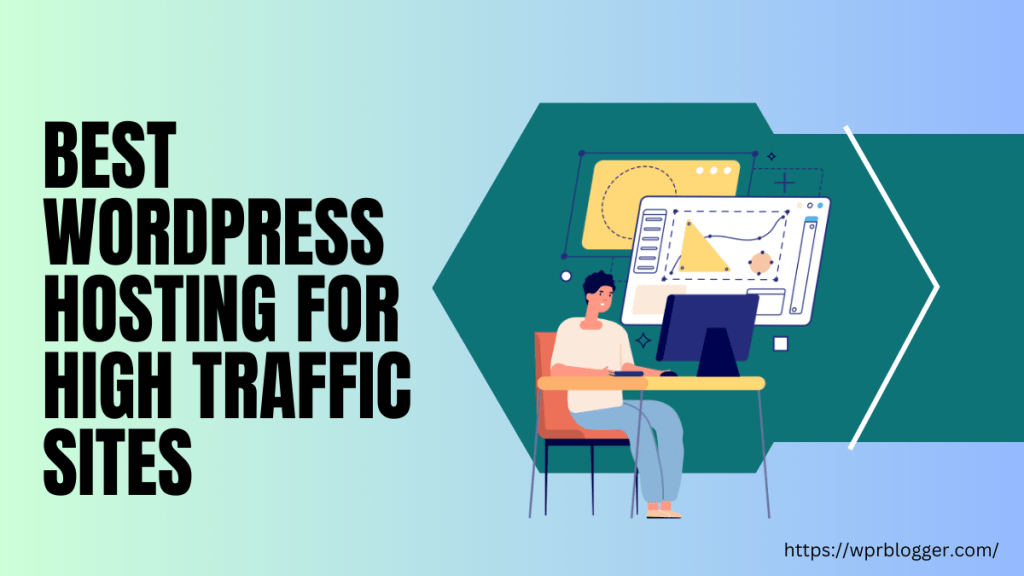If you’re stuck choosing between Hostinger and Namecheap for your website hosting, I get it. I’ve been there too. Both are well-known names, offer affordable shared hosting, and promise solid performance.
But when you dig a little deeper into their offerings, the differences start to matter, especially if you’re just starting out and don’t want to waste time or money on the wrong plan.
This comparison focuses only on their shared hosting plans. Not WordPress hosting. Not VPS. Just regular shared hosting. The kind of hosting type most beginners, bloggers, and small business owners use when they want to get online fast without breaking the bank.
I’ll walk you through what each host actually offers, not just what the sales page says, but how things stack up in real-world use.
We’ll talk about pricing, performance, features, ease of use, support, and more. I’ll also explain how LiteSpeed plays a role in site speed, which one has better backups, and why control panels (cPanel vs hPanel) can make or break your hosting experience if you’re not very tech-savvy.
By the time you’re done reading, you’ll have a clear idea of which one makes more sense for you. Whether you’re building your first blog, moving an existing site, or just trying to avoid another bad hosting decision.
Let’s break it all down. Starting with what you really pay and what you actually get for the money.
| Features | Hostinger | Namecheap |
|---|---|---|
| Control Panel | Custom hPanel (modern, beginner-friendly) | Traditional cPanel (powerful, familiar) |
| Free Domain | Yes (1st year, on yearly plans) | Yes (1st year, on yearly plans) |
| SSL Certificate | Free for life (Let’s Encrypt) | Free 1st year (Namecheap SSL) |
| Backups | Weekly (Premium), Daily + Manual (Business and Cloud Startup) | Daily + Weekly (on Stellar Plus & Business) |
| Email Accounts | Free 1st Year (Capped) | 30 (Stellar) Unlimited (Plus and Business) |
| Storage Type | NVMe SSD | SSD (Cloud SSD on Business plan) |
| Free CDN | Yes (Built-in, no setup needed) | Yes (Supersonic CDN with traffic limits) |
| Website Builder | Yes (Hostinger Website Builder) | Yes (Drag-and-drop builder included) |
| 1-Click WordPress Install | Yes | Yes |
| Staging Tool | Yes | Yes |
| Speed Optimization | LiteSpeed + NVMe + Caching pre-installed | LiteSpeed + Basic CDN + Caching preinstall |
| Uptime & Reliability | 99.9% uptime + Business-grade servers | 99.9% uptime (better on Stellar Business) |
| Support | 24/7 Live Chat, Helpful knowledge base | 24/7 Live Chat, ticket, and Strong domain-level support |
| WHOIS Privacy | Free | Free for life |
| Renewal Pricing | Higher jump on renewal | Slightly more stable pricing at renewal |
| Money-Back Guarantee | 30 days | 30 days |
Hostinger vs Namecheap: Plans and Pricing Breakdown
When it comes to web hosting pricing, both Hostinger and Namecheap are known for offering cheap entry points. But once you look past the big hosting discounts on their homepage, the details can make one option better than the other, depending on what you’re trying to do.
Let’s start with Hostinger.
Hostinger Shared Hosting Plans
Hostinger offers three main shared hosting plans – Premium, Business, and Cloud Startup. There’s also a “Single” plan, but I don’t usually recommend it unless you’re testing or just building a single-page project. It’s too limited for most real-world use.
Premium is what most beginners go for. It allows you to host up to 25 websites, comes with free email accounts, a complimentary domain for the first year, weekly backups, a free CDN, and unlimited bandwidth.
You also receive 25,000 traffic limits, the LiteSpeed Cache plugin, 40 PHP Workers, and 25 GB of SSD storage, which provide optimal performance for most small traffic blogs.
The Business and the Cloud Startup plans might be worth it if you need a few more features, such as daily backups, staging, Hostinger CDN, Amazon Affiliate WordPress plugin, NVMe SSD storage, and extra resources for traffic spikes.
The Business plan comes with 50 GB of NVMe storage, 50 website installations, 100k traffic limits, daily and on-demand backups (instead of weekly), a malware scanner, 60 PHP Workers, Object Cache for WordPress, and additional power to handle traffic or heavier sites.
The Cloud Startup plan offers the most advanced features and resources. It gives you 100GB NVMe storage, 200k visits limits per month, 100 websites, a dedicated IP address, priority support, 100 PHP workers, and 2 million files and directory inodes.
Now here’s the Hostinger pricing catch: those super low prices, like $2.99/month, only apply if you pay for four years (48 months) upfront.
That means you’ll pay about $143 right away. If you choose a shorter billing cycle, such as monthly or yearly, the price increases. And when it’s time to renew after the initial term, the price increases again. This is common in hosting, but it’s something to keep in mind.
Learn more about Hostinger’s complete hosting features on their pricing page.
Namecheap Shared Hosting Plans
Namecheap splits its shared hosting into three plans: Stellar, Stellar Plus, and Stellar Business.
Stellar is the entry-level option. It lets you host up to 3 websites, gives you 20 GB of SSD storage, free email accounts, and a free domain (selected TLD extensions) for the first year. It’s a simple plan that works well for basic blogs or small personal sites.
Stellar Plus gives you unlimited websites and storage (though “unlimited” is still subject to server resource limits). This plan also includes automatic backups and more cloud storage, so you don’t need to worry as much about losing data.
Stellar Business is where things shift a bit. It’s still shared hosting, but it’s built on cloud-based storage. You get 50 GB of SSD space, better stability, automatic daily backups, and better resource allocation for higher traffic sites.
For the price, it offers strong value if you’re running a small business site or an eCommerce store on a budget.
Namecheap’s prices are simpler. You can pay monthly, yearly, or every two years. And the jump between promo pricing and renewal isn’t as steep as Hostinger’s.
For example, the Stellar plan often stays under $5/month even after renewal when paid annually. That predictability matters if you’re planning your budget long term.
All Namecheap shared hosting plans come with free Namecheap SSL certificates for the first year, though you can choose not to use them. If you do, you renew at a regular price after the first free year expires. You also get a free Namecheap SuperSonic CDN, which offers 50GB of bandwidth monthly and basic security features.
So, Which Is the Better Deal?
If all you care about is price for the first few years and you’re willing to commit long-term, Hostinger’s Business plan is hard to beat. The tech is fast, the features are solid, and it’s generous with what it offers, especially for multi-site hosting.
But if you prefer paying year-to-year without massive jumps in renewal fees, or you just want a more straightforward plan that’s easier to manage without upsells, Namecheap keeps it simple and affordable.
The Stellar Business plan, in particular, is one of the better values I’ve seen at its price point, especially with cloud storage and daily backups baked in.
Hostinger and Namecheap offer an AI website builder, LiteSpeed Cache plugin preinstall, subdomain, free WHOIS privacy protection, SSH access, and more. Your chosen web host really depends on your specific hosting needs.
Hostinger vs Namecheap: Performance, Speed, and Uptime
Performance is one area where most people cut corners without realizing how much it matters. I’ve worked with websites that loaded in under two seconds and others that took five or more.
Trust me, the difference is night and day. Visitors bounce, rankings drop, and conversions tank when your site is slow.
So let’s talk about how Hostinger and Namecheap handle speed and uptime, and what’s really under the hood powering each one.
Hostinger’s Performance Setup
Hostinger’s shared hosting plans run on LiteSpeed servers, and that’s a big deal. LiteSpeed is a modern web server that’s designed to be fast, efficient, and perfect for WordPress.
You also get the LiteSpeed Cache plugin pre-installed if you’re using WordPress, which handles page caching, browser caching, and even image optimization, all without needing extra plugins.
I’ve tested Hostinger-hosted sites, and in most cases, the loading times stay under 2 seconds, even without external caching or a CDN. Their Cloud Startup and Business plans use NVMe SSD storage, which is much faster than regular SSDs (Hostinger Premium) and makes a noticeable difference when loading database-heavy pages.
Hostinger also offers a free CDN (content delivery network), which helps distribute your website content closer to your visitors, especially if you’re getting traffic from different countries.
Combine all this with their 99.9% uptime guarantee, and you’re looking at a setup that’s built for speed and stability.
Their data centers are spread out across multiple regions – the US, Europe, and Asia – so you can choose the location closest to your audience. That helps reduce latency and improve overall response times.
Namecheap’s Performance Setup
Namecheap has improved a lot in recent years, and they now also use LiteSpeed servers, at least on their Stellar and Stellar Business plans. If you’re on one of those, you get access to the LiteSpeed Cache plugin and the performance benefits that come with it.
However, one key difference is that not all Namecheap shared plans use NVMe storage. Stellar Business uses cloud storage (which is reliable and stable), but it’s not NVMe. That means it may not be as fast as Hostinger when handling a lot of read/write operations, like with dynamic WordPress sites or eCommerce stores.
Namecheap also includes a free Supersonic CDN, though it comes with a 50 GB/month traffic limit. For many small sites, that’s fine, but if your traffic grows, you might need to upgrade or use an external CDN like Cloudflare.
In terms of uptime, Namecheap offers a 99.9% guarantee, just like Hostinger. In real-world use, uptime is usually stable, but during high-traffic events or shared server overload, I’ve seen slight slowdowns with their lower-tier plans.
The Stellar Business plan, which runs on a virtualized cloud platform, tends to be more stable overall.
Namecheap is more specific about its datacenter location, which is the US, EU, and Singapore, with a cloud storage facility available to handle server and hardware failure for a zero-downtime guarantee. The EU and the Singapore data centers are powered by eco-friendly or renewable power sources, which helps keep the internet more sustainable and pollution-free.
What Does All This Mean for You?
If speed is your top priority, especially for WordPress, Hostinger wins here. Between LiteSpeed, NVMe SSDs, and a more performance-focused stack, you get faster load times out of the box. This helps both SEO and user experience, especially if your site starts to grow.
But if you’re on a tight budget or don’t need blazing speed right away, Namecheap still does a good job, particularly if you go with the Stellar Business plan. Just know that caching and performance tweaks might require more setup to match what Hostinger gives you upfront.
Hostinger vs Namecheap: Ease of Use and Control Panel
Hosting isn’t just about price and speed. You’ll spend time inside the control panel managing your site, adding domains, checking emails, setting up backups, and sometimes restoring things when something breaks.
So, how easy that dashboard is to use, especially if you’re not super technical, makes a big difference.
Let’s look at what it’s like to manage your website within the Hostinger and Namecheap platforms.
Hostinger uses hPanel (Their Own Custom Dashboard)
When you log into Hostinger, you don’t get the usual cPanel that many other web hosts use. Instead, they built their own system called hPanel, and I have to admit, it’s pretty clean and beginner-friendly.
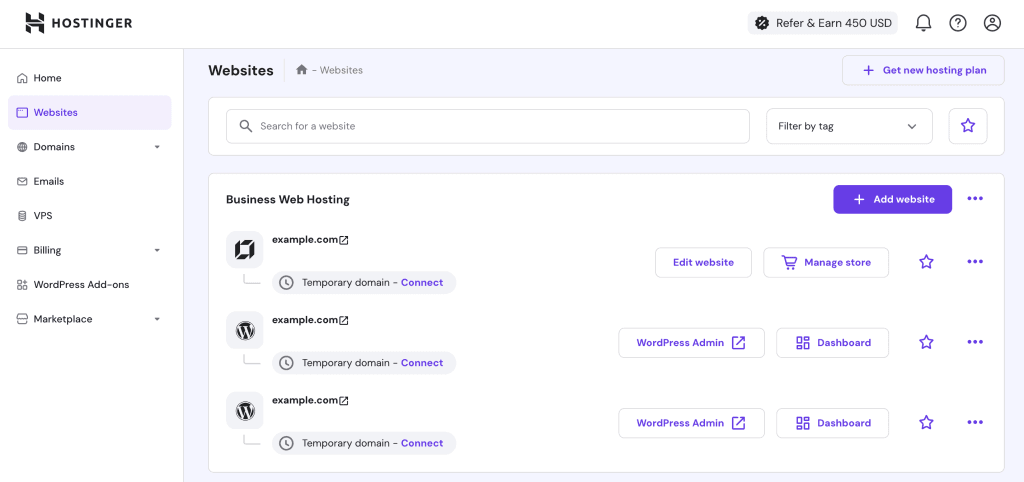
Everything is laid out visually. You don’t get a wall of technical icons like in cPanel. Instead, you’ll see big labeled sections like “Websites,” “Emails,” “Domains,” “Backups,” and “Billings.” If you’re just starting out, this makes your life a lot easier.
For example, if you want to install WordPress, it’s just a couple of clicks – no digging around. The email section is straightforward, DNS settings are simplified, and file management is fast with their built-in file manager.
Even setting up SSL, cron jobs, or staging sites is easier than most hosts I’ve used.
One downside, though: If you’ve used cPanel before or are moving from a host that uses cPanel, hPanel may feel unfamiliar. But once you get used to it, it’s easy to navigate. And if you need help, they include tooltips and guides right inside the dashboard.
Namecheap Uses Traditional cPanel
If you prefer the industry-standard approach, Namecheap sticks with cPanel for its shared hosting plans. This is great if you’re used to managing sites on other hosts like Bluehost or SiteGround, since it works almost the same.
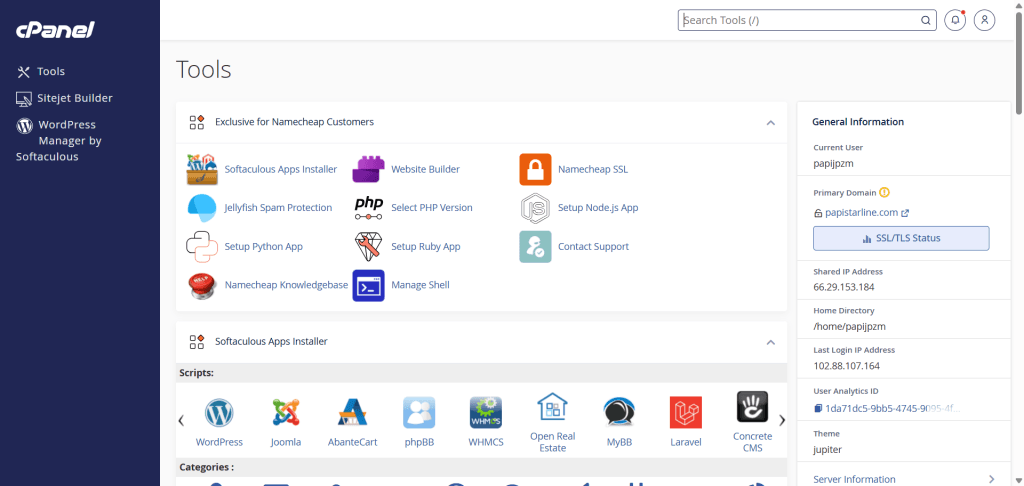
cPanel isn’t as pretty or user-friendly as Hostinger’s hPanel, but it’s very powerful. Everything is packed into one dashboard – file manager, databases, email settings, backup tools, app installer – it’s all there.
But for someone new to hosting, it can feel a bit overwhelming at first. There’s a lot of stuff you may not need, and the layout isn’t the most modern.
That said, one thing I do like is how stable and familiar cPanel is. There is tons of documentation online, and if you ever move to another host, there’s a good chance they use cPanel too. So the learning curve pays off in the long run.
Which One Is Easier?
If I had to pick one web host for beginners, I’d say Hostinger’s hPanel is easier to start with. It’s modern, clean, and everything is organized in a way that makes sense even if you’ve never managed a website before.
But if you’re someone who likes more control, or you already know your way around cPanel, Namecheap gives you that full-feature experience with no surprises.
In both cases, you can get your website live in just a few minutes, but the way you get there looks and feels different.
Next, I’ll take you through the features that come with each plant. The stuff that can save you money and time, like backups, free domains, SSL, and more.
Hostinger vs Namecheap: Features and Freebies That Actually Matter
When most people compare hosting plans, they often look at price and speed, but it’s the smaller features that really affect your day-to-day experience. Things like backups, email, SSL, staging environments, and storage limits can save you time, money, and stress down the line.
Let’s look at what Hostinger and Namecheap actually include with their shared hosting plans, and how useful these extras are once your site is live.
What Hostinger Includes
Hostinger packs a lot into its Premium, Business, and Cloud Startup plans. Here’s what stands out based on my experience and testing.
- Free Domain: You get a free domain on selected top-level extensions for the first year when you sign up for at least a yearly plan. After that, you’ll need to renew it, but the first year can save you a bit if you’re just starting.
- SSL Certificate: SSL is included for free and automatically applied to all your domains. This is non-negotiable these days, especially with Google favoring HTTPS.
- Backups: With Premium, you get weekly backups, while the Business and Cloud Startup plans give you daily backups and the option to trigger backups manually. That alone can save you from third-party backup plugins or services.
- Email Accounts: Hostinger offers limited email accounts on its plans – 2 mailboxes for Premium, 5 on Business, and 10 email accounts on the Cloud Startup. They are free for the first year; you’ll need to upgrade for subsequent uses.
- Storage: Hostinger uses NVMe SSD storage, which is a big plus if speed is a concern. The Business plan gives you 50 GB, and Cloud Startup gives you 100 GB – more than enough for most small to mid-size sites if you host a limited number of websites.
- Free CDN: Hostinger includes a built-in CDN you can activate directly in your dashboard. This helps your content load faster worldwide.
- Website Builder: They include a drag-and-drop builder called Hostinger AI Website Builder, though most people still prefer using other popular page builders like Elementor, Brizy, or Beaver Builder.
- Malware and Vulnerability Scanner: Available on all plans, it scans your files for issues and flags WordPress plugin vulnerabilities, too.
- Staging Tool: One-click staging for WordPress is included on the Business and Cloud Startup plans. You can clone your site, make changes, and push them live when ready.
What I like about Hostinger’s setup is how integrated everything is. You don’t have to chase plugins or third-party tools for basic stuff like SSL, email, or backups. It’s all there.
Note:
Learn more about all Hostinger’s hosting features on the pricing landing page, including the Premium, Business, and Cloud Startup features.
What Namecheap Includes
Namecheap is more straightforward and sticks to the basics, but it still includes a decent set of features, especially considering the price.
- Free Domain: Like Hostinger, you get a free domain for the first year on annual plans. You also get free WHOIS privacy protection, which Hostinger also offers for free on its plans.
- SSL Certificate: A Free Namecheap SSL certificate is included, but there’s a small catch. It’s only free for the first year on all plans for up to 50 domains, including subdomains. So you may need to upgrade if you want long-term coverage beyond the first year. Note: Namecheap does not offer Let’s Encrypt SSL in its shared hosting plan.
- Backups: This is where Namecheap actually pulls ahead. Stellar Plus and Stellar Business come with daily and weekly automatic backups included. You can restore your site from cPanel with just a few clicks.
- Email Accounts: Free custom email accounts are included on all plans, and you can create multiple addresses, not just one or two, but up to 30 email accounts on the Stellar and unlimited on higher-tier plans (Stellar Plus and Business). This is a plus for Namecheap over Hostinger.
- Storage: Stellar starts with 20 GB SSD, Stellar Plus has “unmetered” SSD (within fair use limits), and Stellar Business offers 50 GB SSD on cloud storage, which improves reliability.
- Supersonic CDN: Available for free with all plans, though it has a traffic cap, usually 50 GB/month. Still, it’s good enough for most low- to medium-traffic sites.
- Website Builder: Namecheap includes a drag-and-drop builder as well. It works fine for basic pages, but like Hostinger, you might prefer other popular advanced page builders.
- AI Tools: Namecheap recently added a few AI-powered tools for writing content, image creation, and helping with site setup. These aren’t must-haves, but they’re nice to have if you’re starting from scratch.
Note:
For more information about Namecheap’s shared hosting complete features, check the dedicated landing page.
So, Who Offers Better Features?
If you want more integrated features in one place, Hostinger is more polished. From free lifetime SSL, daily backups on Business and Cloud Startup, staging environments, and faster NVMe storage, it’s just a more complete package, especially if you’re hosting more than one site.
But if you’re trying to keep costs low and prefer the simplicity of cPanel with generous backups, Namecheap does a great job, too. Particularly with the Stellar Plus and Stellar Business plans. You get essential features without being upsold constantly, and it’s easy to manage.
Hostinger vs Namecheap: Customer Support and Reliability
No matter how good a hosting plan looks on paper, it’s only as good as the support behind it. Whether it’s a crashed site, a backup that won’t restore, or just a random email error, you’ll need help at some point.
So, the quality of the support team matters a lot, especially if you’re not super technical.
Let me break down what it is like to get support from Hostinger and Namecheap, based on real-world experience.
Hostinger’s Support Experience
Hostinger offers 24/7 live chat support, but there’s no phone option. When you log in to your account, the chat icon is right there on every page, and the support is tied to your account, so they can instantly see your hosting setup, which makes the process faster.
In most cases, replies come within a few minutes. You first get connected to a chatbot that tries to help with basic stuff, but you can request a human with one click.
Once you’re chatting with an agent, the support is usually solid. They know their way around hPanel, WordPress, and the typical issues people run into – broken SSL, email not working, errors after a plugin update, etc.
One thing I like is how they include helpful links or screenshots when explaining steps. So instead of just telling you what to do, they show you.
It’s not perfect, sometimes you’ll run into scripted replies, or support may ask you to follow a help article rather than fixing something themselves. But overall, it’s better than many budget hosts.
They also have a massive knowledge base, and a lot of tutorials are beginner-focused. If you’re the type who likes to figure things out yourself, it’s a helpful resource.
Namecheap’s Support Experience
Namecheap also offers 24/7 live chat support, and you can open tickets if it’s not urgent. Like Hostinger, there’s no phone support, but chat agents are always available. I’ve used Namecheap support for domain issues, email problems, and cPanel confusion, and in most cases, they’re fast and helpful.
One thing I’ve noticed: their support feels a bit more traditional. You’re not dealing with a custom dashboard or internal panel like hPanel, so the support process often involves going into cPanel, adjusting settings, or being walked through steps that aren’t as “click-and-go” as Hostinger.
That’s not bad, but it can feel a bit more technical if you’re new.
That said, their domain-related support is excellent. If you’re managing both hosting and domains through Namecheap, it’s nice having everything under one roof with people who actually understand DNS, redirects, and registrar-level issues.
They also have a comprehensive knowledge base. It’s not as visually polished as Hostinger’s, but it covers everything you’d expect, from WordPress installs to FTP setup to email troubleshooting.
Reliability: Do They Keep Your Site Running?
Both hosts advertise 99.9% uptime, and based on actual usage and third-party monitoring, they come pretty close.
Hostinger seems to have the edge here, especially on Business or Cloud Startup plans. Their infrastructure feels more robust, and downtime is rare. Plus, their servers are better optimized for WordPress performance and traffic spikes.
You can check the Hostinger uptime status page for more clarification.
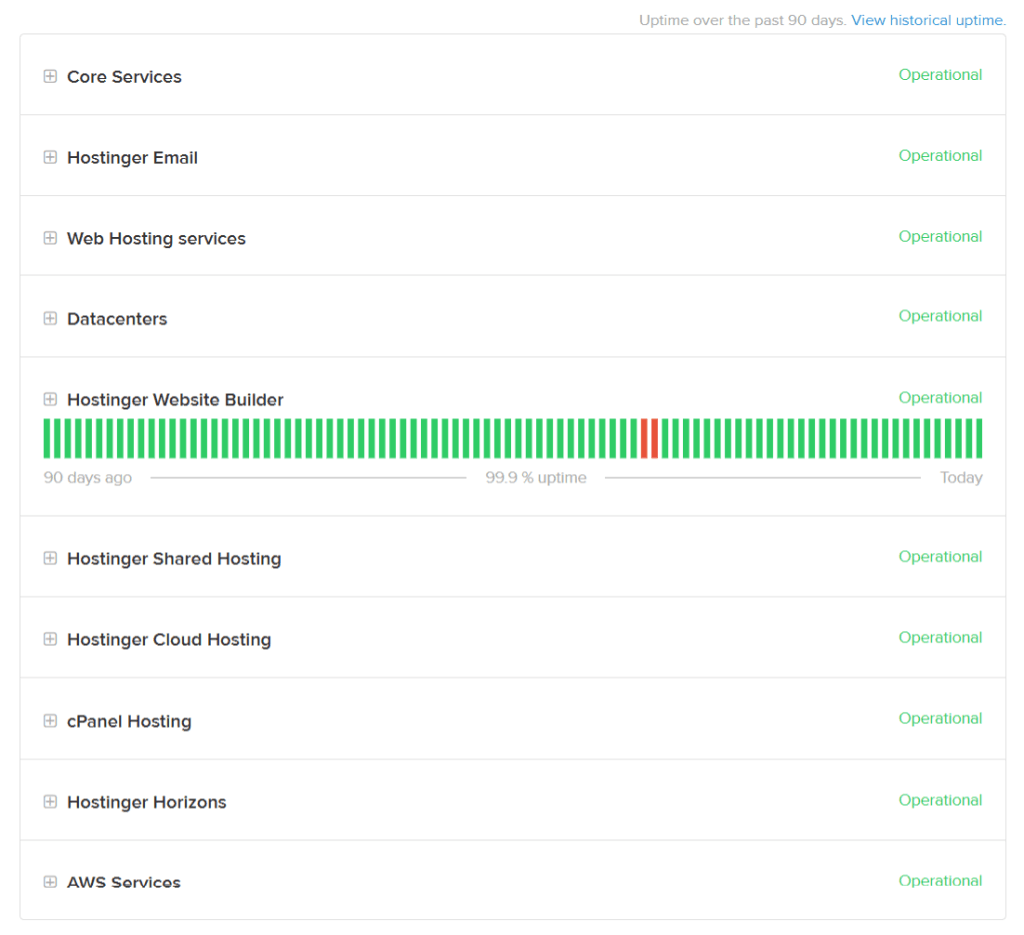
Namecheap is stable too, especially if you go for Stellar Business, which runs on a cloud platform. You’re less likely to run into slowdowns or outages than with the entry-level Stellar plan, which shares more hosting resources between users.
So if uptime and long-term reliability are a top concern, like for business sites, online stores, or high-traffic blogs, I’d lean toward Hostinger. But if your needs are basic and you’re not expecting heavy traffic, Namecheap can easily hold its own.
Namecheap status updates can be found on their website.
Conclusion: Which One Should You Choose?
After using both Hostinger and Namecheap for different projects and comparing them side by side, I can tell you that the better choice really depends on what you need your hosting to do.
If you care most about speed, stability, and getting everything set up with as little effort as possible, Hostinger is the stronger option. It’s fast right out of the box, thanks to NVMe storage, LiteSpeed servers, and built-in caching.
You also get modern tools like one-click staging, a clean dashboard (hPanel), daily backups on the higher tier plan, and a CDN that’s already baked in.
This setup works well for WordPress users, bloggers, freelancers, agencies, and even small businesses. It feels more like a managed WordPress host, but without the high monthly fee.
On the other hand, if you’re looking for budget hosting that still covers the essentials, Namecheap is a good pick, especially the Stellar Plus or Stellar Business plans. You still get LiteSpeed servers, daily backups, free email, and cPanel access. It’s ideal for people who already understand cPanel or want more control over their site’s backend.
Namecheap also shines if you’re buying and managing domains. Having hosting and domain services under one account just makes life easier. Namecheap throws in free WHOIS privacy by default.
That said, the trade-off with Namecheap is that you might have to do a bit more to optimize things manually, especially for WordPress performance.


